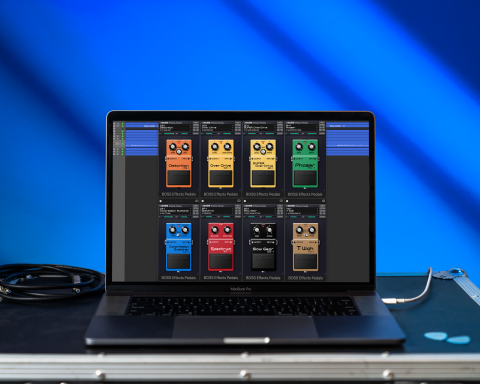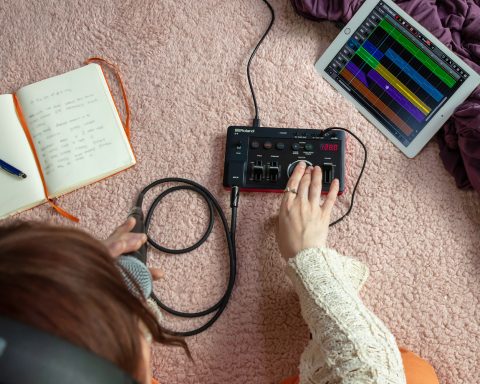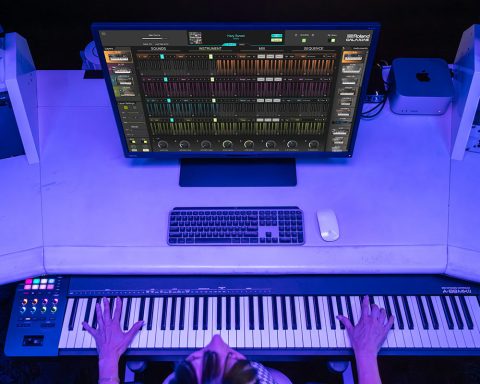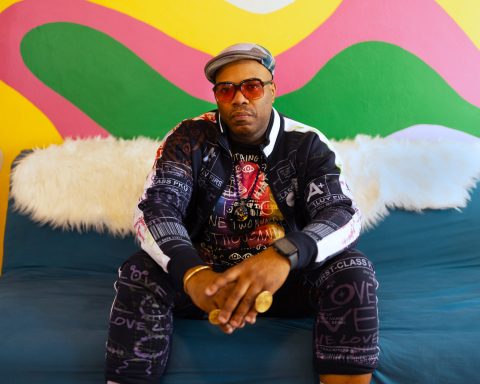Carlos St. John Phillips, better known as SAINt JHN is a Guyanese-American rapper, singer, and producer. He began gaining traction in 2016 with the release of his first singles: “1999,” “Roses,” and “Reflex.” Before then, Phillips worked as a songwriter for artists like Usher, Rihanna, Kiesza, Gorgon City, and others. In 2019 Phillips collaborated with Kazakh producer Imanbek on a remix of “Roses.” The song gained traction via TikTok and Snapchat. Imanbek’s remix pitched up the vocals and raised the tempo, turning a trap ballad into an uptempo dance jam. The success of the remix earned SAINt JHN and Imanbek a Grammy award for Best Remixed Recording, Non-Classical. Using ZENOLOGY, let’s explore how to recreate some of the essential sounds from this multi-platinum record.
About ZENOLOGY
ZENOLOGY is a powerful software synth that brings fresh possibilities to any musical experience—including recreating the synth tones of “Roses” by SAINt JHN and Imanbek. At the heart of ZENOLOGY is the ZEN-Core Synthesis System. It allows users to design large and complex sounds using a wide range of detailed parameters.
ZENOLOGY Pro gives you full access to all the tools you need to take your sound design game to the next level. Each tone contains four distinct synthesis voices called “partials” that can be used simultaneously. (Model Expansions may contain fewer partials.) In each partial, you can select the oscillator waveform and adjust parameters for the dual low-frequency oscillators (LFOs), filter, amplifier, and EQ. Choose from thousands of waveforms. In addition, there are 10 types of modeled filters, 11 LFO shapes, and 90 audio effects.
Bassline
The first and most important sound in this song is the bass. The bassline of “Roses” defines the entire mood and texture of the track. Simultaneously, it provides a rhythmic, melodic, and harmonic foundation for the rest of the instruments to work within. To recreate this sound, use a combination of two different ZENOLOGY bass presets. “Rubber Syn Bs” will give an almost exact match of the bass tone on the record by adjusting a few parameters. Set Cutoff to 11 o’clock. Reso to 9 o’clock, Attack to 11 o’clock, Release to 1 o’clock, and Vibrato 11 o’clock.
Here’s an example of the bassline with just the “Imanbek Bass 1” preset.
"The bassline of "Roses" defines the entire mood and texture of the track. It provides a rhythmic, melodic, and harmonic foundation for the rest of the instruments."
This sound makes up the bulk of the bass tone. However, it still needs some extra bass texture. To add another layer, use the “Finger Bass” preset and adjust the parameters. Set Cutoff to 11 o’clock, Reso to 1 o’clock, Attack 11 to o’clock, Release to 1 o’clock, Vibrato to 1 o-clock. Then add Partial 2 and adjust the PCM oscillator to add a sine wave to the sound. Try the JP-8 preset for the sine wave source.
Here’s what the bassline sounds like with just the “Imanbek Bass 2” preset.
Now listen to the bassline with both sounds mixed together.
The bassline itself builds off the F minor pentatonic scale. As this remix is in F minor, the bassline helps to anchor the harmony and create a counter-melody to the vocals.
Chorus Pad
When we get to the chorus section or breakdown section, the mood shifts drastically. The instrumentation throughout the entire song is very minimal. As a result, this section makes room for the vocals to shine while a subtle pad sneaks into the background. There are two components to this particular pad: the chords and one repeating F note.
Try these parts separately to tweak the sound of the two different parts. To recreate this sound, use the “Shimmer Pad” preset and adjust the time on the modulation delay effect. Turning the delay down to about 105 milliseconds on both left and right parameters allows the repeating note to cut through. However, by turning the delay time up, you get a more understated texture for the chords. Adjust the Cutoff to 9 o’clock, Attack to 9 o’clock, and Release to 11 o’clock.
This audio example shows the single note part, the chords isolated, and the two parts together.
"In the chorus or breakdown, the mood shifts. This makes room for the vocals to shine while a subtle pad sneaks into the background."
Verse Keys
Although you can barely hear it in the first verse, there’s a subtle keyboard part supporting the bassline. It becomes more prominent around the breakdown at 0:49. It then remains throughout the rest of the song except on the choruses. To recreate the sound, use the “E.Grand” preset and add the Super Filter audio effect in the MFX window.
Then add the built-in EQ to push up some of the highs to give the sound a tinnier tone—as if it was coming from an old radio. SAINt JHN and Imanbek most likely sampled the sound from the original version of “Roses,” which is much more piano-heavy. The part itself is simply a two-chord vamp between F minor and Bb minor in the first inversion.
ZENOLOGY gives you the tools you need to emulate the tones in “Roses” by SAINt JHN and much more. Furthermore, it’s an instrument that can help you create new sonic worlds. With deep sound design capabilities plus Model Expansions and Sound Packs, the sky is the limit. Listen to all the elements together and see how they measure up to the actual song.
DOWNLOAD
"Roses" Patches for ZENOLOGY
Try out the patches from this article in ZENOLOGY Pro, ZEN-Core-compatible Roland hardware, and the ZC1 Synthesizer* in the Zenbeats music creation app.
 DOWNLOAD: “Roses” Patches for ZENOLOGY
DOWNLOAD: “Roses” Patches for ZENOLOGY
*ZC1 does not support patches using sample packs






